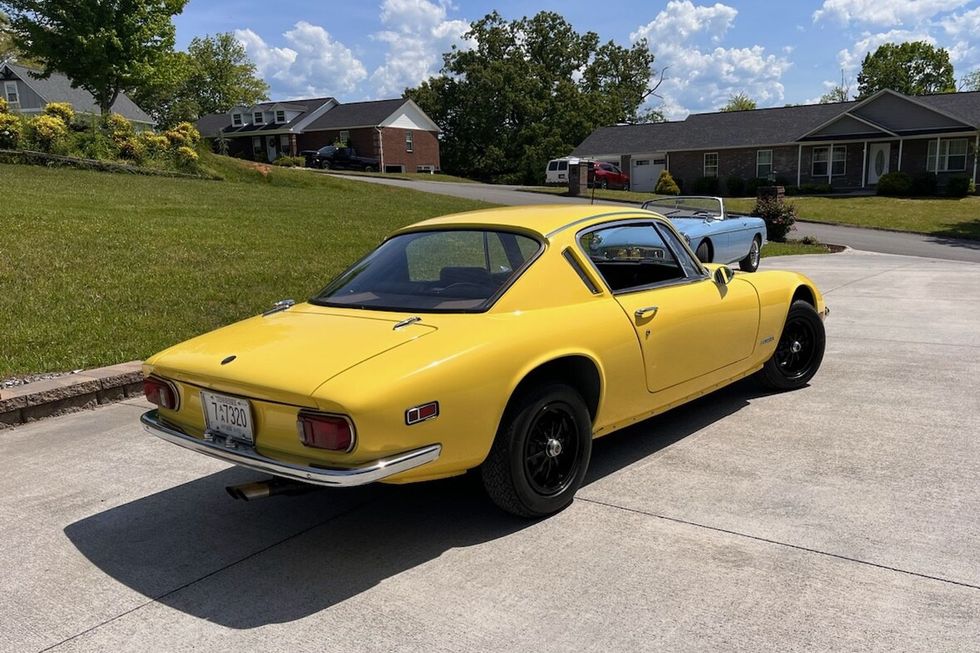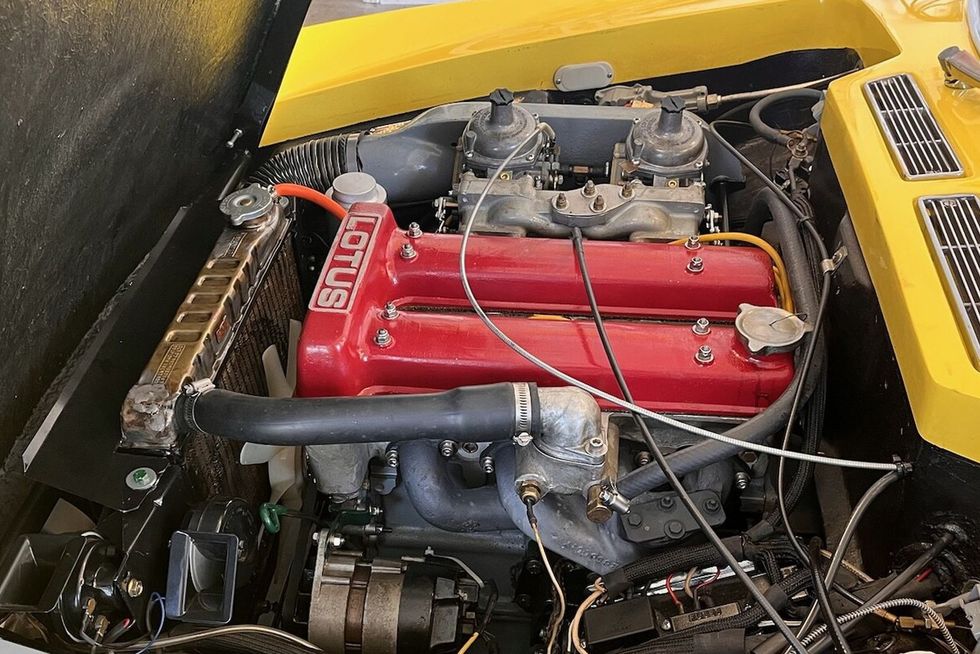1937-'41 BMW 327 Sport-Coupe and 1954-'55 EMW 327/3
World War II Separated This Straight-Six Coupe And Its East German Derivative
07/19/2023

World War II Separated This Straight-Six Coupe And Its East German Derivative

BMW has a proud tradition of building luxurious, sporting two-door coupes powered by the company’s trademark inline-six engines. The earliest such cars dated back to the late prewar period, and they offered a prestigious connection to BMW’s first world-class competition car, the 1936 328 roadster. The division of Germany after World War II left the Munich-based automaker officially separated from its original Eisenach factory, which restarted production of the 327 coupe for a short time and dubbed it the EMW 327/3.
While the 327 was introduced in open Sport-Convertible guise, the follow-up 327 Sport-Coupe looked even sleeker, its low, rounded roof with two-piece front and rear screens replacing the original’s bulky folded-top stack. Indeed, wearing cutaway rear-wheel spats, the solid-roof 327 looked more closely related to the racy, low-door 328. It echoed the sports car’s faired-in headlamps and streamlined, smaller version of the company’s twin-kidney grille, and made the spare wheel a proud styling feature on the fixed rear deck. Inside, individual front seats were joined by a small rear bench whose backrest folded to provide access to the trunk. The dashboard positioned ample instrumentation directly in front of the driver, and the four-speed transmission’s shifter was on the floor in the correct fashion.
Under the long hood was BMW’s smooth-running 2.0-liter inline-six, related to the same-displacement version powering the 328. This overhead-valve engine featured a 6.3:1 compression ratio and two Solex carburetors, and it made 55 horsepower. While this was enough for an adequate 78-mph top speed, BMW gave 9-mph more in its 1938 327/28, which used the roadgoing 328’s 80-hp, triple-downdraft-carbureted six with a hemispherical, crossflow head and 7.5:1 compression ratio.
While production numbers of the 327 and 327/28 Sport-Coupe aren’t available— BMW indicates 1,873 327 variants were built in total, covering both engines and body styles—the last examples left Eisenach in 1941. This aeronautical-engine producer turned motorcycle and car manufacturer would be in dire straits after WWII, its local Munich plant destroyed by Allied bombs and its Eisenach design offices and factory behind Soviet lines. The East German operation ramped up production of these prewar models using BMW badging and Eastern-bloc parts while Munich’s “true” BMW was returning to motorcycle manufacture. In 1952, the Soviets transferred Eisenach factory ownership to the East German government, and it got a new name to go with its red-and-white roundel logo: VEB IFA-Automobilfabrik EMW Eisenach, or Eisenacher Motorenwerk/EMW.
The BMW 327-based EMW 327/3 Sport-Coupe, and its 327/2 Sport-Cabriolet sibling, were offered between 1949 and 1955, the former made only in 1954-’55 using traditional steel-over-wood-frame body construction by VEB Karrosseriewerk Dresden. These expensive cars were nearly identical to the originals, differing in details like the dashboard, one-piece rear window, and redesigned hood. Their 1,977-cc OHV inline-six engines made 57-hp with the help of twin IFA downdraft carburetors, clones of the original Solex 32s. A mere 152 EMW 327/3 coupes were believed built for East German VIPs and for export; a handful are known to remain, including #144, the black and red 1954 327/3 belonging to Rachelle “Rocky” and Henry Grady.
Engine: OHV inline-6, 1,977-cc, twin 1-barrel/ triple 1-barrel downdraft carburetors 55-57 / 80 hp at 3,750 / 5,000 rpm N/A / 93-lb-ft at N/A / 4,000 rpm
Transmission: Four-speed manual with synchromesh and freewheeling on first and second gears
Suspension: Front, twin A-arms, transverse leaf spring, hydraulic shocks; Rear, solid axle, longitudinal leaf springs, hydraulic shocks
Brakes: Four-wheel drum
Wheelbase: 108.3 inches
Curb weight: 2,425 pounds
Price new: N/A
Value today: $70,000-$300,000
Porsche has confirmed the official arrival of its hybrid 911 model, which will see its full debut on Tuesday, May 28. Whether or not sports car enthusiasts and Porsche aficionados accept the new hybrid as the newest 911 model, the sports car’s performance capabilities can’t be denied.
In its press release, Porsche boasted that its engineers logged over 3,000,000 test miles on the new 911. The hybrid was subjected to testing in the Artic Circle’s extreme cold environment and the unbearably hot deserts of Dubai, but Porsche didn’t stop there. Stop-and-go traffic scenarios were vigorously tested for drivers who plan to daily drive their new 911.
Perhaps the most impressive tests took place on the famous Nürburgring circuit. Porsche claims that Le Mans World Champion driver Jörg Bergmeister took the wheel, piloting the hybrid-powered 911 around the course in just 7:16.934 minutes, which is reportedly “8.7 seconds faster than the corresponding version of the predecessor model.”
Porsche has not yet released full performance data for the 2025 911, so it’s difficult to say exactly what those comparisons look like. Since the math makes sense, Porsche could be comparing the hybrid 911 to the 992 Carrera 4 GTS, which lapped the Nürburgring in 7:25.632. What we do know is that the 493-horsepower GT4 RS completed a lap at the Nürburgring in 7:03.121 minutes, just 14 seconds quicker than the road-going hybrid.
“For the first time in our icon’s 61-year history, we are installing a hybrid drive system in a roadgoing 911. This innovative performance hybrid makes the 911 even more dynamic,” Frank Moser, Vice President of 911 and 18 said. “We left nothing to chance during development and tested the new 911 under all sorts of conditions all over the world. Whether at a high drivetrain load in the demanding conditions of mountain passes or in the stop-and-go traffic of an urban environment, the new 911 has mastered even the most difficult challenges with aplomb."
Stay tuned for more details on May 28, when Porsche is scheduled to reveal the beginning of a new era, the hybrid 911 sports car.
In the early 1960s, Lotus debuted the Elan, an extremely lightweight, exceptionally small sports car. With its backbone chassis and fiberglass body, the Elan—available as a roadster or fixed-roof coupe—weighed a little over 1,500 pounds. A Ford Kent-based engine with a twin-cam, 16-valve cylinder head gave the diminutive sports car brisk performance, allowing the tiny Elan to punch well above its weight class. One thing thin the Elan was never noted for, however, was comfort, nor convenience, what with only two seats.
Enter the Elan +2, a much larger car built with the same design and engineering features, but with space for two children in the back and more comfort for the driver and front passenger. The Plus 2 debuted in 1967 and not long after an updated version, the +2S, was released with additional luxuries. Unlike the Elan, the +2 was only ever produced as a coupe. This 1972 Lotus Elan +2S 130 now offered on Hemmings Auctions appears to be a road-ready example of the first four-seater from Lotus. The “130” portion of the name came from the revised, higher-output 126-horsepower engine in the model released in the early 1970s.

Like the original, the Elan +2S featured a backbone frame and a fiberglass body. Though still compact by almost any definition of a car from the 1960s, the four-seater was bigger in every dimension. Lotus designers and engineers were tasked with creating a car that “must be capable of transporting two adults and two children 1,000 miles in comfort with their luggage.” The Plus 2’s 96-inch wheelbase was a foot longer than the original. And its overall length of 169 inches was a full two feet longer than the earlier car. Additionally, it measured 10 inches wider and two inches taller. The Plus 2 was still relatively small, itself measuring one foot shorter in both wheelbase and overall length compared to a 1965 Ford Mustang Hardtop.
Those plus-size dimensions greatly contributed to the comfort inside the car, but with road testers of the day still praising the car for maintaining the Elan’s adroit handling. Motor Sport magazine from the U.K. described the Plus 2’s steering as “incredibly light and precise.” In detail, they wrote, “The all-round independent suspension with its racing-like wishbone and link lay-out gives the car superb handling, of that there is no doubt. The glory of it is that you can whip along country lanes with their twists and turns without drama, in complete safety and not working hard while drivers in lesser vehicles struggle to keep up.”

The “big-valve” version of the 1,558-cc Lotus-designed/Ford-based twin-cam four-cylinder engine in the +2S 130 was rated at 126 horsepower and 113 lb-ft of torque, giving the car brisk acceleration, as it weighed a little over 2,000 pounds. A four-speed manual directed power to the rear wheels. Road testers of the +2S and +2S 130 models reported 0-60 mph times at right around, or even just under, eight seconds.
Technically, by 1972, there was no such model as the Elan +2S. Rather, Lotus dubbed the car the +2S 130, or alternatively the Plus 2 130. In either case, despite the obvious origins and former use of the name with the model, “Elan” was dropped from the moniker by that time. The Elan name did reappear the following year. Though Elan production ceased in 1973, the Elan +2 continued through 1974.

The notes on this 1972 Lotus Elan +2S 130 currently listed on Hemmings Auctions indicate that this Plus 2 has been restored, including a rebuild of its original engine and four-speed manual transmission, completed some 3,000 miles ago. The seller shared that the water, oil and fuel pumps were replaced, while the radiator was rebuilt. Additional fresh components are said to be the brake discs, updated Rotoflex drive couplings and wheel bearings, all as part of a chassis rebuild.
The seller reports that the fiberglass bodied was disassembled, repaired and professionally refinished before reassembly. The original brightwork was rechromed as necessary and the original glass reinstalled with new seals. Fresh Pirelli Cinturato rubber was mounted on refinished original Lotus 10-spoke alloy wheels. According to the Classic Lotus Elan Register, this +2S 130 is one of 1,879 +2S and +2S 130 models built out of a total production run of 5,139 Elan +2’s.
Take a look at this 1972 +2S 130 at Hemmings Auctions to see what a right-sized Lotus Elan looks like.
